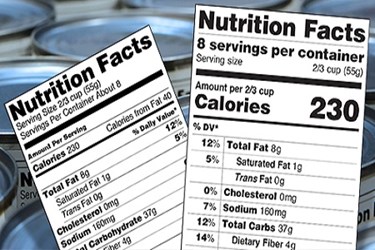How Beneficial Are The FDA's Proposed Nutrition Labels?

By Sam Lewis

A recent study from the Georgetown Institute for Consumer Research examines the effectiveness of the FDA’s proposed nutrition facts format against the current format
Back in January, the FDA proposed its first changes to the Nutrition Facts panel in more than two decades. In March, a study from Georgetown Institute for Consumer Research (GICR) was assembled to determine how beneficial both the current and proposed labels are to consumers. The study examines specifically how helpful the labels are when read quickly and if the increased importance on serving size and caloric value make the labels appear more accurate.
In the study from GICR, 830 consumers were given a frozen pizza, a 20 oz. soda, and an 8 oz. bag of chips. Following each item was a picture of each product’s nutrition label. At random, the study’s participants were assigned to view the product’s current label, the proposed label, or an alternative to the proposed label. Each label contained information regarding the current serving sizes — one serving of soda is 8 oz. — or the proposed labels’ 1.5 times the existing serving size — one 20 oz. bottle of soda — reflecting the FDA’s serving-size adjustment. Finally, the label’s information was shown for either for 10 seconds — simulating an in-grocery-store viewing of the information — or shown for an unlimited amount of time. Then, consumers pointed out how healthy each item was perceived to be, along with how beneficial they found the labels to be.
The study concluded the proposed labels were the most helpful when viewed in the brief, 10-second window, mimicking the time a consumer would spending looking at labels while walking through grocery aisles. This aligns with the FDA’s goal of the proposed changes to the Nutrition Facts panel. The study also indicates that consumers are perceiving products that have larger portion sizes as being less healthy.
The benefits of the current labels only fall short to the proposed ones due to lack of brevity. If consumers are given unlimited time to review labels, the current labels were found to be more helpful than the proposed ones. But who has time to examine nutrition facts as if they were a novel? It seems 10 seconds is an accurate representation of the amount of time the average consumer spends looking at a product’s nutrition information. This indicates the FDA’s proposed changes to nutrition information are spot on not only with consumers’ desires — more clear cut, bolder, and important information up front in an easy-to-understand format — but also fits their needs in a busy, on-the-go world.
